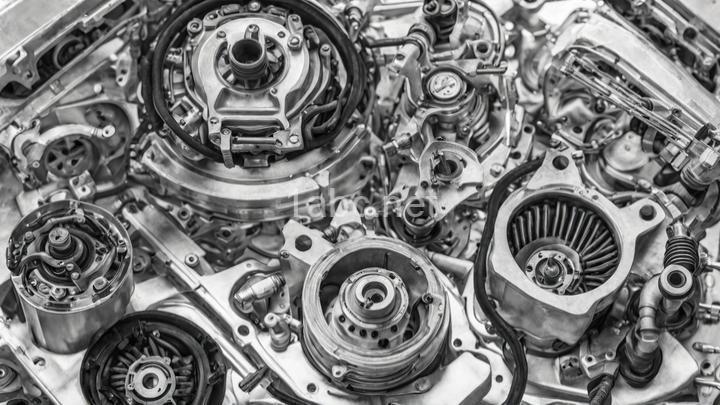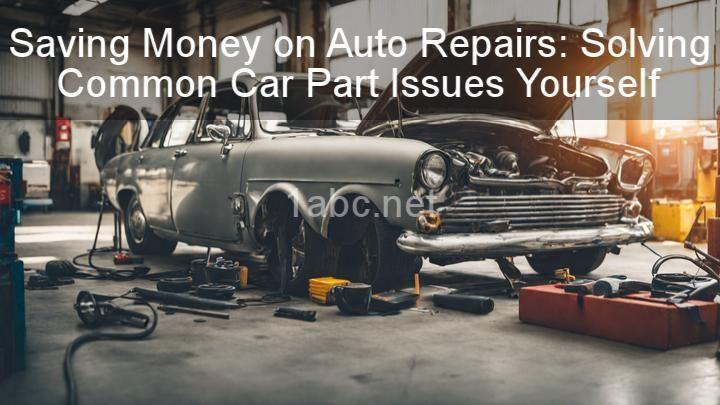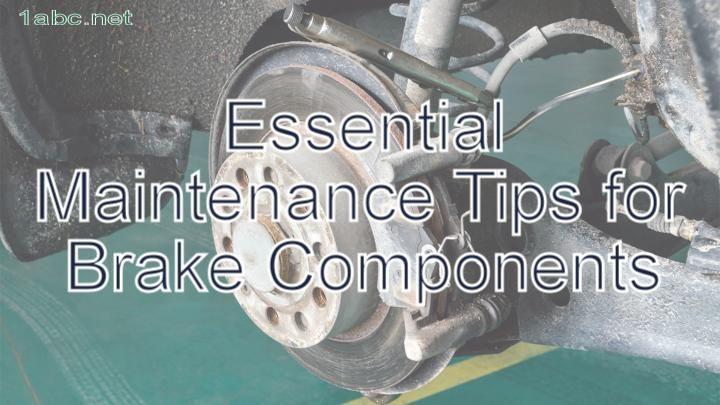From Starters to Alternators: Decoding Common Car Part Problems

Introduction:
Hello and welcome, fellow car enthusiasts! Whether you're a seasoned car owner or just starting your journey with automobiles, understanding common car part problems is crucial. In this comprehensive guide, we will delve into the world of starters and alternators, two vital components of your vehicle's electrical system. By decoding the mysteries surrounding these parts, you'll be better equipped to diagnose, troubleshoot, and even prevent potential issues. So, buckle up and let's dive into the fascinating world of starters and alternators!
I. Understanding Starters:
Let's begin by unraveling the secrets of starters. In simple terms, a starter is an electric motor responsible for initiating the engine's combustion process. It plays a crucial role in the car's starting system, turning the engine's flywheel to kickstart the ignition.
As with any car part, starters can experience issues over time. There are a few common signs to look out for, indicating a faulty starter. These include clicking noises when turning the key, engine failure to start, or the engine cranking too slowly. If you encounter any of these signs, it's essential to investigate further to determine if the starter is the culprit.
Now, let's explore the reasons behind starter failures. One common issue is a worn-out solenoid, a component responsible for engaging the starter motor. Other potential causes include electrical problems, such as corroded wires or loose battery connections. By understanding these underlying issues, you'll be able to troubleshoot more effectively.
When it comes to troubleshooting starter problems, there are a few simple steps you can follow. First, thoroughly inspect the battery connections, ensuring they are tight and free of corrosion. Next, check the voltage of the battery using a multimeter to ensure it meets the manufacturer's specifications. If the battery is functioning correctly, it's time to test the starter motor itself. By following step-by-step instructions and using visual aids or diagrams, you can easily diagnose and potentially resolve starter issues.
If the starter is indeed faulty, it may be necessary to replace it. However, it's crucial to prioritize safety when working under the hood. Always disconnect the battery and follow proper precautions to avoid any mishaps. By arming yourself with the knowledge of troubleshooting and replacing starters, you can save both time and money.
II. Understanding Alternators:
Now that we've covered starters, let's move on to the equally important alternators. An alternator is a device that generates electrical power for your vehicle while the engine is running. It charges the battery and provides power to various electrical components, ensuring they function optimally.
To identify potential alternator issues, it's essential to be aware of warning signs. These signs may include dimming lights, battery warning lights illuminating on the dashboard, or even a dead battery. These symptoms indicate that your alternator may be failing and require attention.
Alternator failures can occur due to a variety of reasons. One common issue is worn-out brushes, which are responsible for transferring electrical current to the rotor. Another culprit could be faulty diodes, which control the flow of electrical current within the alternator. Understanding these common causes will help you diagnose and address the problem effectively.
III. Troubleshooting Alternator Issues:
Now, let's dive into troubleshooting alternator issues. To begin, you can test the alternator's output using multimeters or other tools designed for this purpose. By following step-by-step instructions and utilizing visual aids, you can easily measure the alternator's voltage and determine if it's functioning correctly.
While the alternator itself may be the root cause of the problem, it's crucial to consider other factors that could affect its performance. For example, belt tension plays a vital role in power transmission from the engine to the alternator. Additionally, wiring connections and battery health can impact the overall functioning of the alternator. By inspecting these components and addressing any potential issues, you can ensure optimal performance.
In complex cases where professional assistance may be required, it's crucial to seek the help of a qualified technician. However, for simpler issues, there are DIY solutions available. By empowering yourself with troubleshooting knowledge, you can potentially save time and money by resolving minor alternator problems on your own.
IV. Maintenance Tips for Starters and Alternators:
To prolong the lifespan of starters and alternators, regular maintenance is crucial. Here are a few preventive measures to keep these essential components in top shape:
- Regular Inspections: Periodically inspect the starters and alternators for any signs of wear or damage. Look out for loose connections, corrosion, or any other abnormalities.
- Cleaning: Keep the starters and alternators clean by removing any dirt, dust, or debris. This prevents the accumulation of potentially damaging particles and ensures optimal performance.
- High-Quality Parts: When replacing starters or alternators, always opt for high-quality parts. Using genuine or recommended replacements will ensure longevity and compatibility with your vehicle.
- Manufacturer Guidelines: Follow the manufacturer's guidelines for maintenance and replacement intervals. Adhering to these recommendations will help you stay ahead of potential problems and prevent costly repairs.
Conclusion:
Congratulations on completing this comprehensive guide to decoding common car part problems, specifically pertaining to starters and alternators. By understanding the inner workings of these components and familiarizing yourself with signs of trouble, troubleshooting techniques, and preventive measures, you are now better equipped to handle potential issues that may arise.
Remember, staying proactive and addressing any car part problems promptly will save you both time and money in the long run. Regular inspections, proper maintenance, and using high-quality parts are essential habits to adopt. By arming yourself with knowledge and taking the necessary steps, you can keep your vehicle running smoothly and enjoy the open road with confidence!
Safe travels, and until next time!
FREQUENTLY ASKED QUESTIONS
What is the purpose of this content?
The purpose of this content is to provide helpful information and support on various topics.
Who is this content intended for?
This content is intended for anyone who is seeking answers or support on various topics.
What are starters and alternators?
Starters and alternators are two important components of a vehicle's electrical system.
- A starter is an electric motor that is responsible for initiating the internal combustion process in an engine. It assists in starting the engine by turning the crankshaft until the engine fires up and runs on its own. Once the engine is running, the starter disengages from the crankshaft.
- On the other hand, an alternator is a device that generates electrical power to charge the vehicle's battery and power its electrical equipment while the engine is running. It is driven by the engine's crankshaft through a belt and utilizes the engine's mechanical energy to produce electrical energy. The alternator plays a crucial role in maintaining the battery's charge and keeping the electrical system operational.
In summary, the starter is involved in the engine's initial starting process, while the alternator generates electrical power to keep the vehicle's battery charged and supply power to its electrical components while the engine is running.
How do starters and alternators work in a car?
Starters and alternators are key components in a car's electrical system. Here's how they work:
- Starter:
The starter is responsible for initiating the engine's combustion process. When you turn the ignition key, an electrical signal is sent to the starter solenoid, which activates the starter motor. The starter motor then turns the engine's crankshaft, enabling the combustion process to begin. Once the engine is running, the starter disengages from the flywheel.
2. Alternator:
The alternator plays a crucial role in charging the car's battery and powering the electrical system when the engine is running. It converts mechanical energy from the engine into electrical energy. The alternator is driven by a belt connected to the engine. As the engine rotates, the alternator spins and generates electricity. This electrical energy is used to recharge the battery and power electrical components, such as the lights, audio system, and other accessories in the car.
In summary, the starter is responsible for initiating the engine's combustion process, while the alternator generates electricity to charge the battery and power the car's electrical system while the engine is running.




